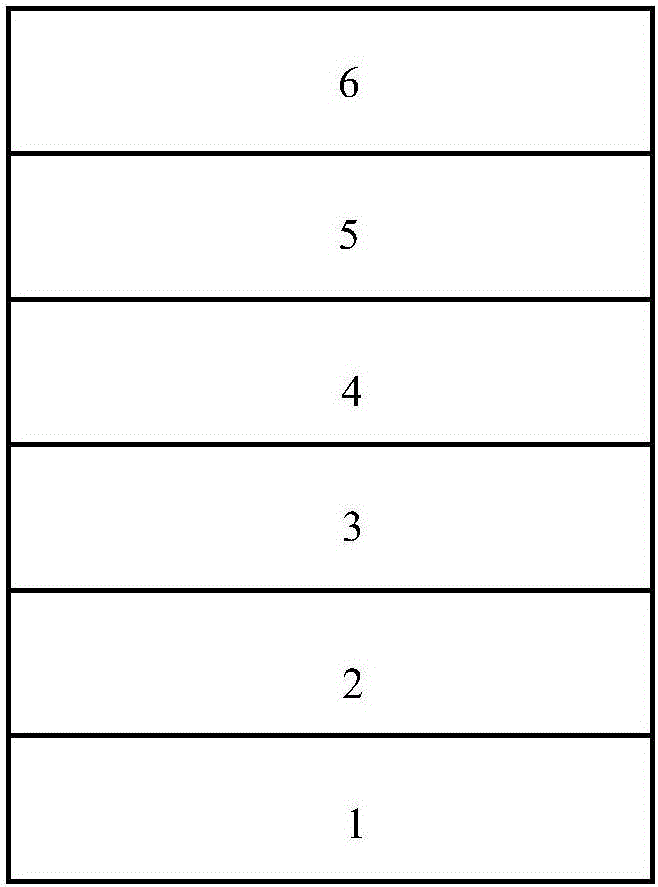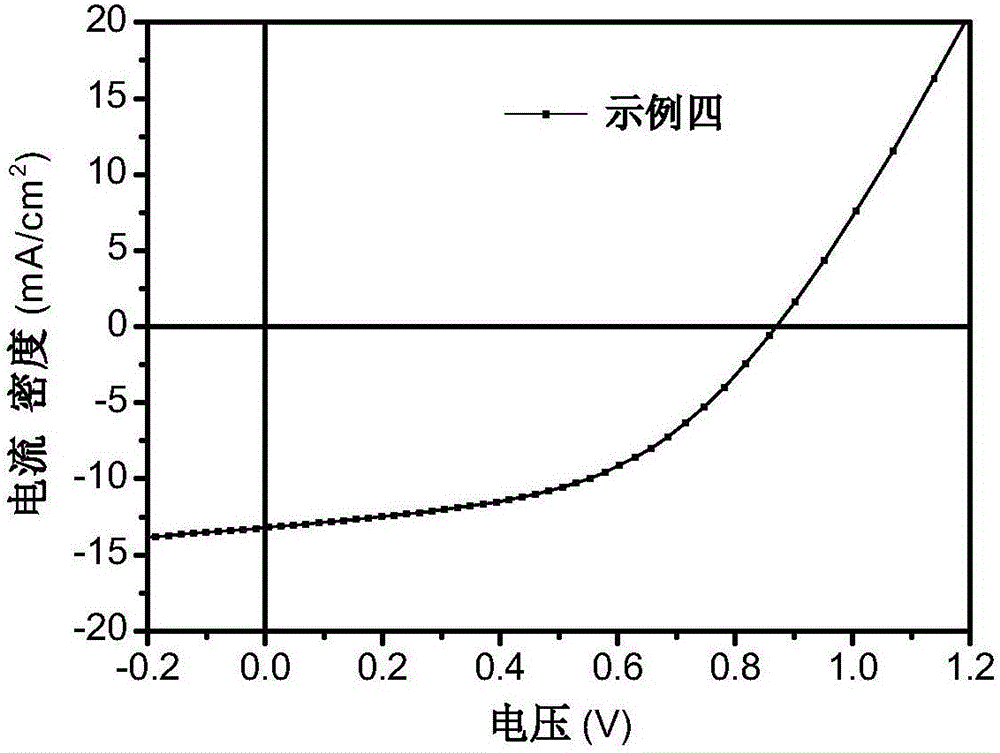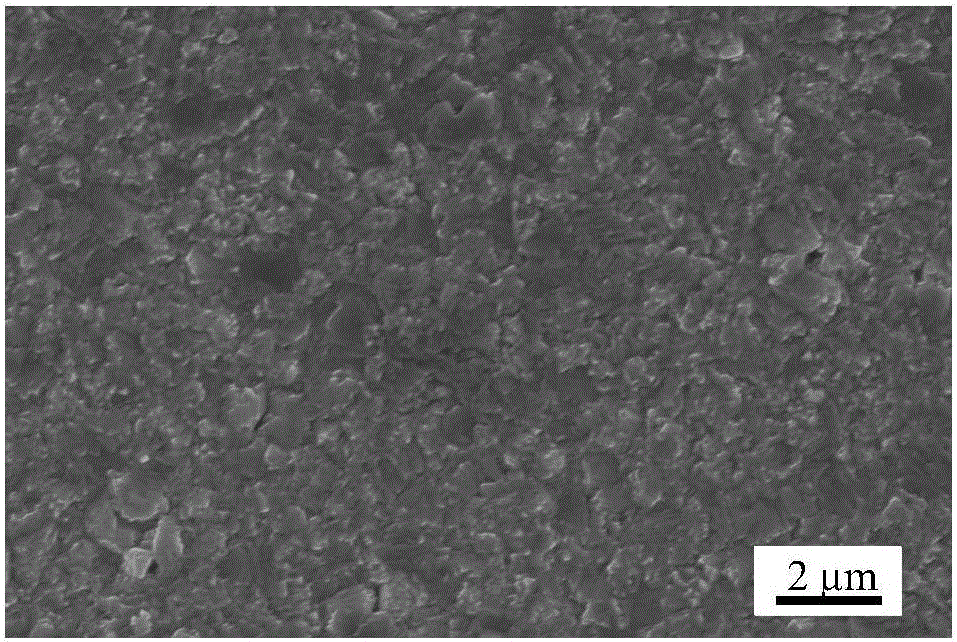CuZnSnS-perovskite-based planar heterojunction solar cell and manufacturing method thereof
A solar cell, copper-zinc-tin-sulfur technology, applied in the direction of circuits, photovoltaic power generation, electrical components, etc., can solve the problems of unfavorable solar cell promotion and application, high cost of Spiro-OMeTAD, etc., achieve high charge extraction efficiency, reduce application costs, The effect of large abundance
- Summary
- Abstract
- Description
- Claims
- Application Information
AI Technical Summary
Problems solved by technology
Method used
Image
Examples
Embodiment 1
[0033] The glass substrate covered with indium tin oxide was ultrasonically washed with detergent, acetone, and ethanol for 30 minutes, dried with a nitrogen gun, and treated with ultraviolet-ozone for 5 minutes. Put the substrate into the vacuum chamber and evacuate to 5×10 -6 Below torr (Torr), heat the substrate to 400°C, then pass in argon to keep the vacuum at 0.5Pa, and deposit a copper-zinc-tin-sulfur film of about 50nm by intermediate frequency magnetron sputtering. 1mmol of CH 3 NH 3 I and 1 mmol PbI 2Dissolve the powder into 1 mL of dimethylformamide (DMF) solution, then add 100 μL of dimethyl sulfoxide (DMSO) solution to the solution, take 50 μL of the solution and drop it on the surface of the copper-zinc-tin-sulfur film to make it fully Spread out, then rotate the sample, and then anneal the sample at 100°C for 10 minutes, and the thickness of the obtained film is about 300nm, which is the perovskite film layer. On the surface of the perovskite thin film, a Zn...
Embodiment 2
[0035] The glass substrate covered with indium tin oxide was ultrasonically washed with detergent, acetone, and ethanol for 30 minutes, dried with a nitrogen gun, and treated with ultraviolet-ozone for 5 minutes. Put the substrate into the vacuum chamber and evacuate to 5×10 -6 Below torr, the substrate was heated to 400°C, and then argon was introduced to keep the vacuum at 0.5Pa, and a copper-zinc-tin-sulfur film of about 50nm was deposited by intermediate frequency magnetron sputtering. 1.35 mmol of CH 3 NH 3 I and 1.35 mmol PbI 2 Dissolve the powder into 1 mL of dimethylformamide (DMF) solution, then add 100 μL of dimethyl sulfoxide (DMSO) solution to the solution, take 50 μL of the solution and drop it on the surface of the copper-zinc-tin-sulfur film to make it fully Spread out, then rotate the sample, and then anneal the sample at 100 °C for 10 min, and the thickness of the obtained film is about 400 nm. On the surface of the perovskite thin film, a ZnO electron tra...
Embodiment 3
[0037] The glass substrate covered with fluorine-doped tin oxide was ultrasonically washed with detergent, acetone, and ethanol for 30 minutes, dried with a nitrogen gun, and treated with ultraviolet-ozone for 5 minutes. Put the substrate into the vacuum chamber and evacuate to 5×10 -6 Below torr, the substrate was heated to 500°C, and then argon was introduced to keep the vacuum at 0.5Pa, and a copper-zinc-tin-sulfur film of about 50nm was deposited by intermediate frequency magnetron sputtering. 1mmol of CH 3 NH 3 I and 1 mmol PbI 2 Dissolve the powder into 1 mL of dimethylformamide (DMF) solution, then add 100 μL of dimethyl sulfoxide (DMSO) solution to the solution, take 50 μL of the solution and drop it on the surface of the copper-zinc-tin-sulfur film to make it fully Spread out, then rotate the sample, and then anneal the sample at 100 °C for 10 min, and the thickness of the obtained film is about 300 nm. On the surface of the perovskite thin film, a ZnO electron tr...
PUM
| Property | Measurement | Unit |
|---|---|---|
| Thickness | aaaaa | aaaaa |
| Thickness | aaaaa | aaaaa |
Abstract
Description
Claims
Application Information
 Login to View More
Login to View More - R&D
- Intellectual Property
- Life Sciences
- Materials
- Tech Scout
- Unparalleled Data Quality
- Higher Quality Content
- 60% Fewer Hallucinations
Browse by: Latest US Patents, China's latest patents, Technical Efficacy Thesaurus, Application Domain, Technology Topic, Popular Technical Reports.
© 2025 PatSnap. All rights reserved.Legal|Privacy policy|Modern Slavery Act Transparency Statement|Sitemap|About US| Contact US: help@patsnap.com



